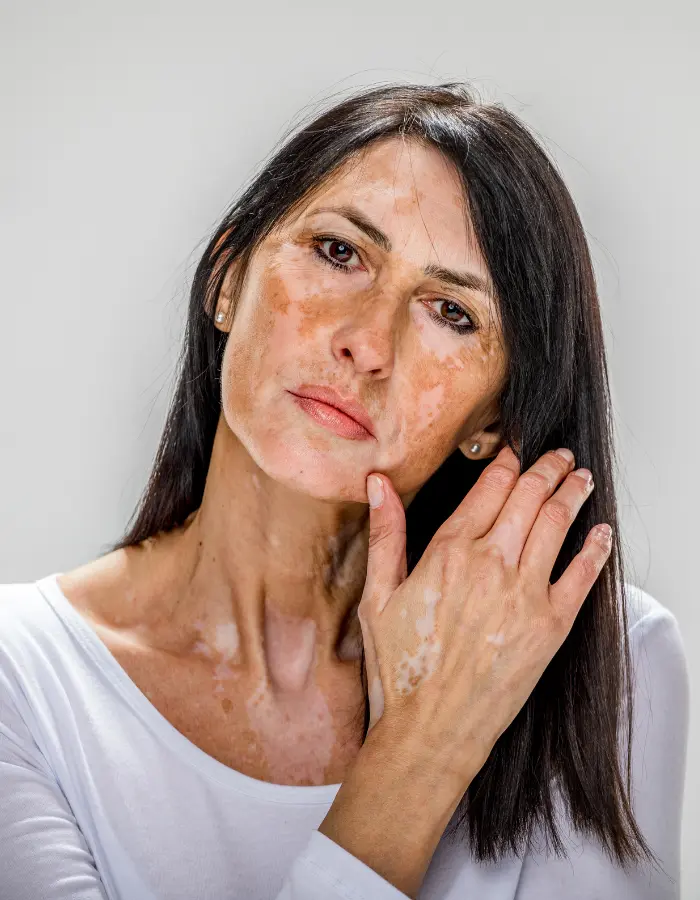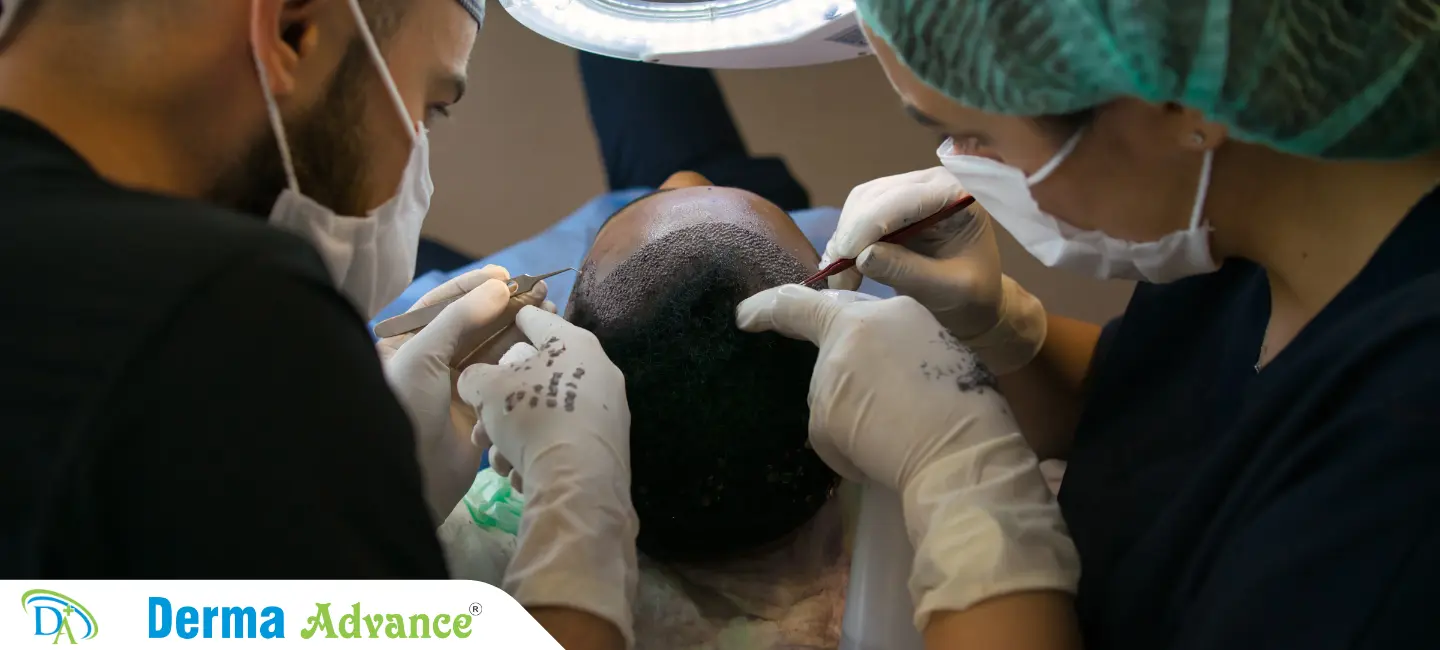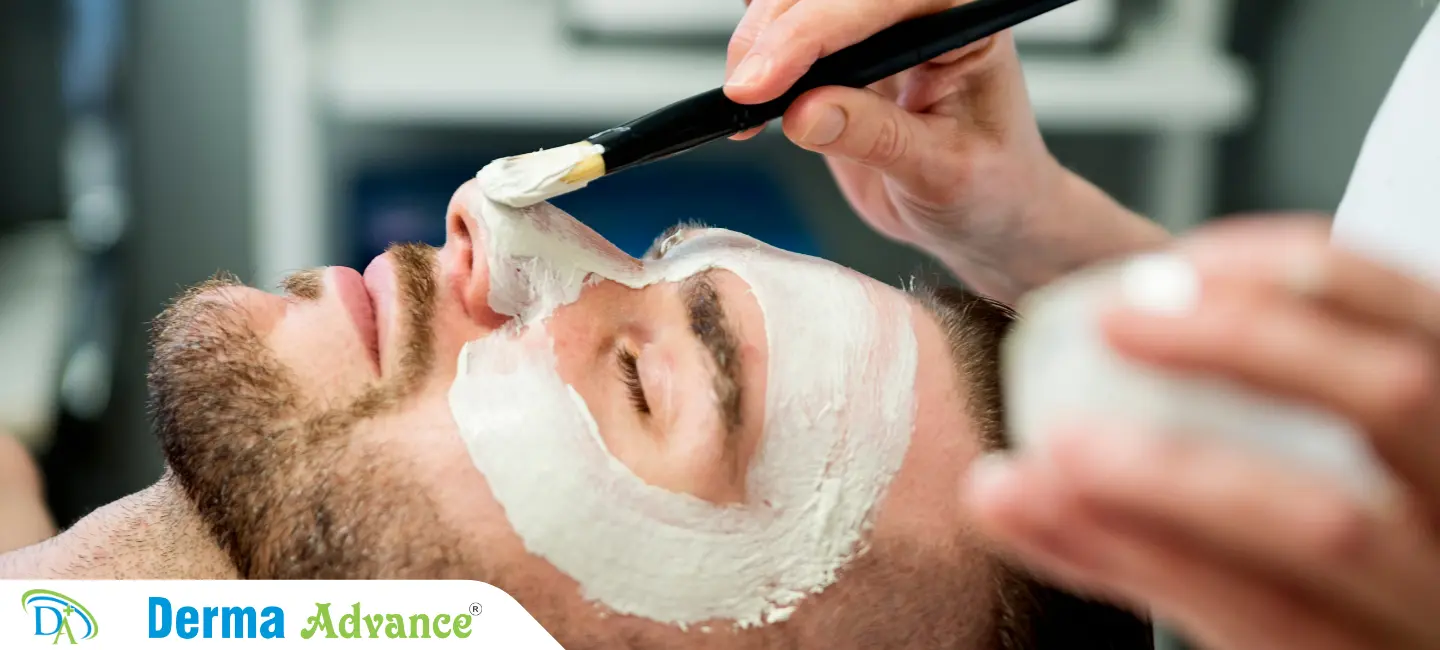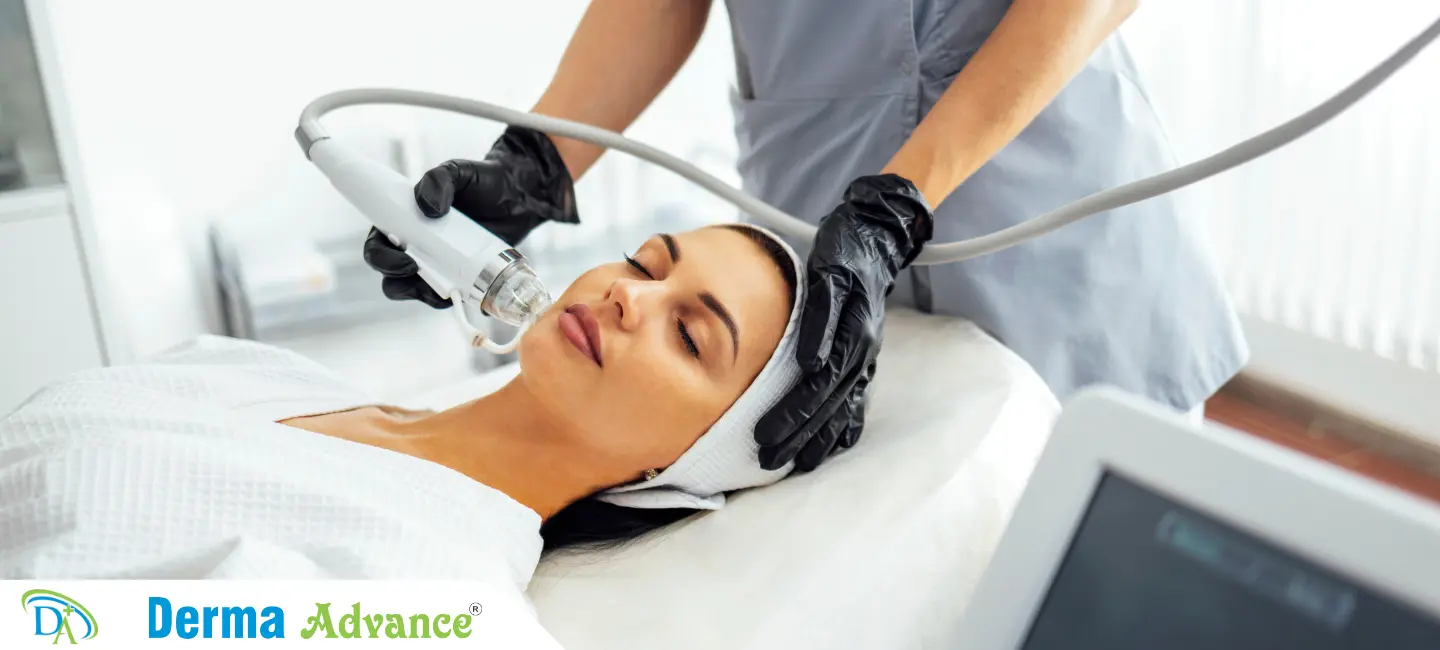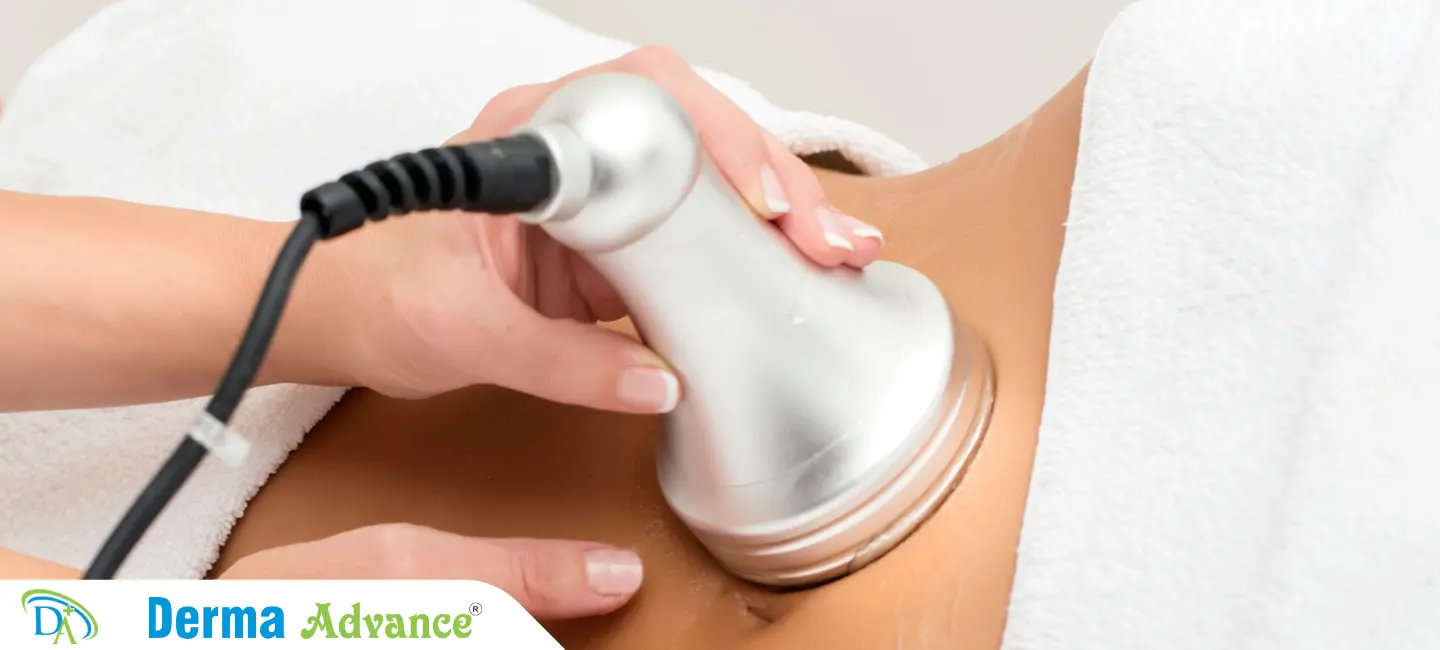What is Vitiligo?
Vitiligo is a condition where skin loses its pigment, resulting in white patches. It's caused by the destruction of melanocytes, the cells that produce melanin.
Vitiligo is a skin condition characterized by the loss of pigment, which leads to the development of white patches on various parts of the body. This occurs when melanocytes, the cells responsible for producing melanin (the pigment that gives skin its color), are destroyed. The exact cause of this destruction is not fully understood but is believed to involve autoimmune, genetic, and environmental factors.
The condition can affect any area of the body, including the skin, hair, and even the inside of the mouth. While vitiligo is not life-threatening or contagious, it can have significant psychological and social impacts. Treatment options aim to restore color or even out skin tone and include topical medications, light therapy, and in some cases, surgery.
Immense Care
We aim to provide immense care tailored to manage and treat your health condition. Be assured, you are in safe hands!
Modern Techniques
We provide modern treatments to ensure you get the quickest and most effective solution to your health conditions!
Symptoms of Vitiligo
What are the Symptoms of Vitiligo?
Vitiligo primarily manifests as white patches on the skin, which can appear anywhere on the body. These patches are more noticeable in areas exposed to the sun, such as the face, hands, and arms. The patches can vary in size and shape and may gradually spread over time.
In addition to skin depigmentation, vitiligo can cause loss of color in the hair, including on the scalp, eyebrows, eyelashes, and beard. In some cases, the condition may also affect the mucous membranes inside the mouth and nose.
The progression of vitiligo is unpredictable, with some individuals experiencing rapid changes and others seeing minimal progression over years. The condition can be distressing due to its visible nature and the associated psychological impact, often leading to self-esteem issues and social anxiety.
Skin Depigmentation
White patches appear on the skin due to the loss of pigment-producing cells. These patches can be of various sizes and are usually more noticeable in sun-exposed areas.
Hair Depigmentation
Hair in affected areas may turn white or gray. This can include hair on the scalp, as well as facial hair like eyebrows, eyelashes, and beard.
Mucous Membrane Involvement
Vitiligo can also cause depigmentation of the mucous membranes, leading to white patches inside the mouth and nose.
Progressive Spread
The patches may spread and change shape over time, with the extent and speed of progression varying greatly between individuals.
Psychological Impact
The visible nature of vitiligo can lead to psychological distress, including reduced self-esteem and social anxiety due to the condition’s appearance.
Sensitivity to Sun
The depigmented areas of the skin are more sensitive to sunlight and can burn easily, requiring diligent sun protection.
Diagnosis of Vitiligo
1
Physical Examination
A dermatologist examines the skin for characteristic white patches, assessing their size, shape, and distribution to identify vitiligo.
2
Medical History Review
Reviewing personal and family medical history helps identify potential genetic factors or other conditions associated with vitiligo.
3
Wood's Lamp Examination
A Wood’s lamp emits ultraviolet light, highlighting depigmented areas more clearly to help distinguish vitiligo from other skin conditions.
4
Skin Biopsy
In some cases, a small skin sample is taken to examine under a microscope, confirming the loss of melanocytes and ruling out other conditions.
5
Blood Tests
Blood tests may be conducted to check for associated autoimmune conditions, such as thyroid disorders, that are commonly linked with vitiligo.
6
UV Sensitivity Test
Tests may be performed to assess how the skin responds to UV light, helping to plan appropriate treatment strategies for vitiligo.
Book Your Appointment
Find Solution to Vitiligo Now!
Meet Our Expert Vitiligo Specialists


Treatment of Vitiligo
How is Vitiligo treated?
Treatment for vitiligo aims to restore skin color and improve the appearance of affected areas. Topical corticosteroids and calcineurin inhibitors are commonly prescribed to help reduce inflammation and promote repigmentation. These medications can be effective, especially in early stages.
Light therapy, such as narrowband ultraviolet B (NB-UVB) phototherapy, is another treatment option. This involves exposing the skin to controlled amounts of UV light to stimulate melanocyte activity and restore pigmentation. In more severe cases, depigmentation of unaffected skin may be considered to achieve a more uniform appearance.
Surgical options, including skin grafts and micropigmentation, are available for patients with stable vitiligo. These procedures aim to transplant or implant pigment into depigmented areas. Combining treatments often yields the best results, and a dermatologist can tailor the approach to each individual's condition and response to therapy.
Topical Corticosteroids
These creams help reduce inflammation and stimulate repigmentation by suppressing the immune system’s attack on melanocytes.
Calcineurin Inhibitors
Medications like tacrolimus and pimecrolimus are used to modulate the immune response, aiding in the repigmentation of affected skin.
Phototherapy
Narrowband UVB light therapy involves regular exposure to UV light to stimulate melanocytes and encourage repigmentation.
Skin Grafting
Involves transplanting skin from a normally pigmented area to a depigmented area to restore color and improve appearance.
Micropigmentation
A form of tattooing that implants pigment into the skin to camouflage white patches, providing a more uniform appearance.
Depigmentation
For extensive vitiligo, the removal of remaining pigment from unaffected skin can create a more even skin tone.
Causes of Vitiligo
1
Autoimmune Response
The immune system mistakenly attacks and destroys melanocytes, leading to loss of skin pigmentation and the development of vitiligo.
2
Genetic Predisposition
Individuals with a family history of vitiligo are more likely to develop the condition, suggesting a genetic component to its onset.
3
Environmental Triggers
Factors like sunburn, skin trauma, and exposure to certain chemicals can trigger or exacerbate vitiligo in susceptible individuals.
4
Neurogenic Factors
Nerve endings in the skin may release chemicals that are toxic to melanocytes, contributing to their destruction and the development of vitiligo.
5
Oxidative Stress
Imbalance between free radicals and antioxidants in the body may lead to damage and destruction of melanocytes, contributing to vitiligo.
6
Associated Autoimmune Conditions
Vitiligo is often linked with other autoimmune disorders, such as thyroid disease, suggesting a broader immune system dysfunction.
How to Prevent Vitiligo?
Vitiligo is a condition where skin loses its pigment, resulting in white patches. It's caused by the destruction of melanocytes, the cells that produce melanin.
While there is no known way to prevent vitiligo, taking steps to protect the skin and overall health can help manage risk factors. Avoiding skin trauma and harsh chemicals can reduce the likelihood of triggering vitiligo. Managing stress and maintaining a healthy diet support the immune system, potentially mitigating autoimmune responses.
Regular use of sunscreen helps protect depigmented areas from UV damage and reduces the risk of skin cancer. Early intervention with treatments can also help manage the condition effectively.


